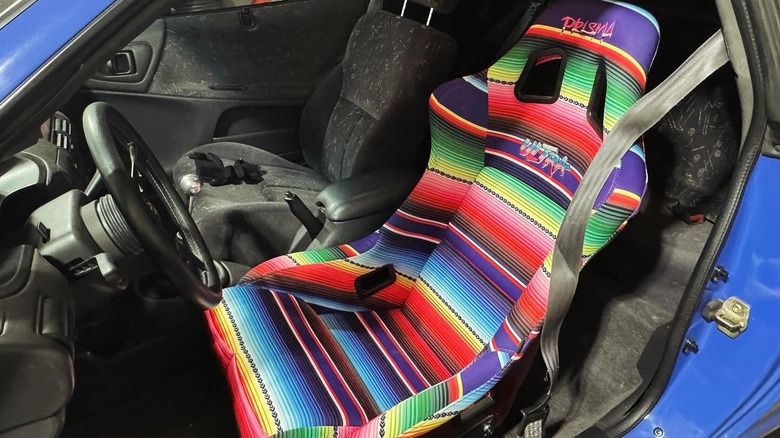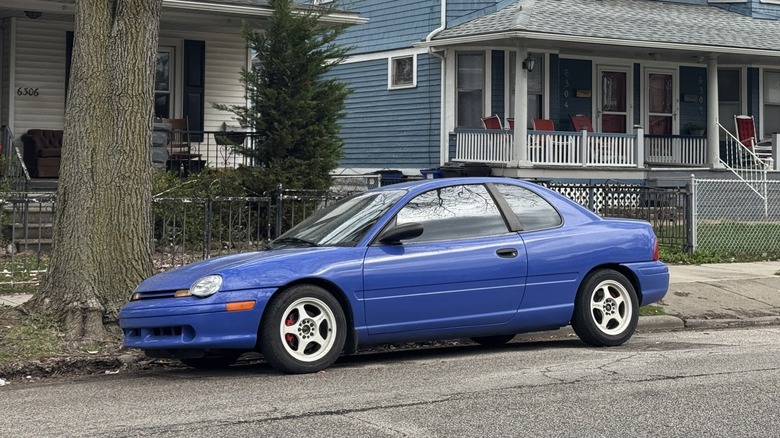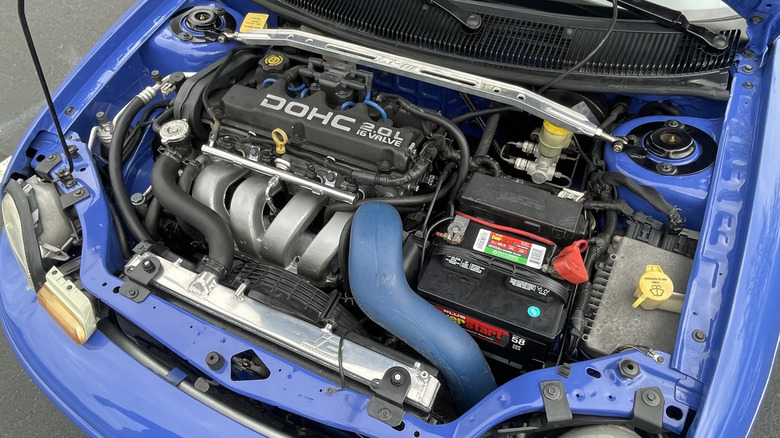The 1990s were an incredible time for car enthusiasts, especially if your particular niche was sporty, compact, and front-wheel drive. Back then automakers were putting together machines that were as much at home on the race track as they were the road. Acura’s Integra Type R exemplified the strategy, bringing race-car mannerisms into your home garage with an incredible 8,000 RPM 1.8-liter engine dominating the conversation, and a solid-but-playful chassis to back it up. Many car enthusiasts will tell you that the ITR never had an equal, and never will again, but they’re wrong. There was a contemporary competitor available from every Dodge dealer in every town in America for significantly less money, the humble Neon ACR.
Consider the following; Both the ITR and the ACR were created as competition packages for otherwise relatively staid economy cars, both featured high-revving inline-four cylinder engines, both were equipped with significant suspension packages, both weighed around 2500 pounds ready to rock and could be ordered without air conditioning or a radio. So why are Integra Type Rs revered by collectors and enthusiasts while the Neon gets short shrift? Today an Integra Type R commands a six-figure price tag, while I bought this gorgeous Lapis Blue example, possibly the nicest enthusiast-modified example in the world, for just $6,500. Even by rarity measure, the Neon wins with just 4,256 (estimated) examples built versus the Acura’s estimated 4,800 just for North America.
For those not in the know, the ACR was a competition package for the ubiquitous Neon.
Good old-fashioned cheap fun
When you look at the spec sheets, the cars look pretty similar. Except Honda was able to extract more power from its 1.8-liter than Dodge could get out of a two-liter. And I’ll be the first to admit that the build quality on the Integra Type R is typical Honda with uniform panel gaps and quality materials, while feeling solid despite a focus on lightweight. The Neon, meanwhile, is indicative of mid-1990s Dodge for better or worse. Consider, for a moment, that the $24,000 Integra Type R cost almost ten thousand 1998 dollars more than a Neon ACR, and you begin to understand the appeal. An American sports coupe buyer can live with a lot of creaky panels and terrible unbolstered seats for the equivalent of $19,619 in 2025 money.
Unlike the ITR, the ACR didn’t come with a wing or any badging. The only way to pick an ACR out of a lineup is by its foglight bumper with no foglights and the missing door rub strips. Aside from the DOHC engine, ACR models got four-wheel disc brakes, adjustable Koni shocks, thicker sway bars, stiffer bushings, better steering, upgraded hubs, and a shorter-ratio gearbox. Early models even ditched the factory speed limiter and ABS to save pounds.
I don’t think I buy that the Neon’s engine was as far down on power as Dodge claimed, though. In-period the twin-cam engine was advertised at an even 150 ponies compared to the ITR’s 195, but it ran a 7.2 second 0-60 and 15.8 second quarter mile against the Acura’s 6.8 and 14.9. In any case, both were pretty damn quick for front-drive coupes in period, and both are slower than your average mid-sized SUV in 2025, so what does acceleration matter? What really matters is how they drive!
Quotes from the folks who drove them
The Integra and Neon were both knocking on the door of one lateral G in the mid-1990s, which is impressive considering the period-available tire technology. These are some of the greatest handling front-wheel drive machines of all time.
Here are some throwback quotes from people who drove them in-period to give you an idea of what these cars were like back then.
From Grassroots Motorsports’ David S. Wallens: “When Dodge invited us to try out its new factory race car at Moroso Motorsports Park circa 1994, we weren’t expecting a front-drive compact that looked more at home in rental fleets than on the grid. But the Neon ACR was truly a revelation: a turnkey race car you could buy from a dealer and drive to a national SCCA title in autocross or road racing.”
Richard Meaden once wrote of the ITR for Evo Magazine: “It’s a car as sweet and all-consuming as any I’ve experienced at any price, and as pure and focused in its own way as any Porsche RS.”
Seems like high praise for either choice to me.
What’s special about my car?
While a stock Neon would indeed fall behind an Integra Type R in most aspects, save (arguably) driving enjoyment, my Neon has had a few aftermarket upgrades to make it more in line with an ITR on pace, including a full 2.4-liter motor rebuild with better cams, a higher-flowing head, a cold air intake, exhaust work, and a period MoPar ECU. I don’t have any dynamometer sheets, mostly because I don’t really care, but estimates put it on a bit more than the 200-ish that Honda made from the legendary B18. With a set of period-correct wheels and modern rubber, rebuilt factory-adjustable Konis with stiffer springs, thicker sway bars and tower braces at both ends, I’d venture that my modified Neon could hold its own with a six-figure ITR any day. If anyone wants to put that theory to the test, let me know which autocross or track you want to meet up at for your ass beating.
I absolutely adore this car, and I need to get out and use it more this year. Track days, autocrosses, back road bombing, the ACR is good at all of it. No matter how much you spent for your Integra Type R, I promise you I’m having more fun, and that’s the metric that matters most to me.






